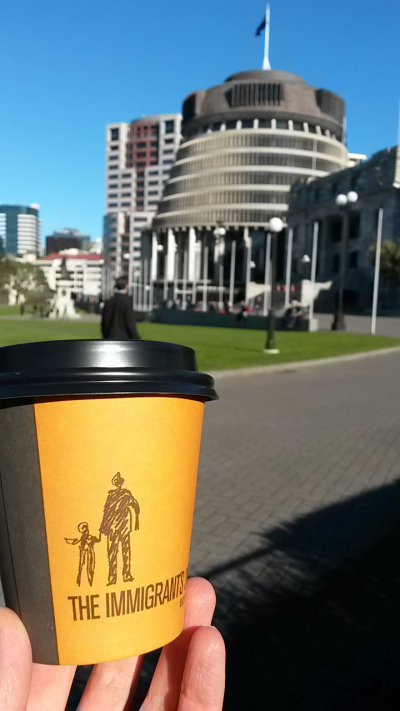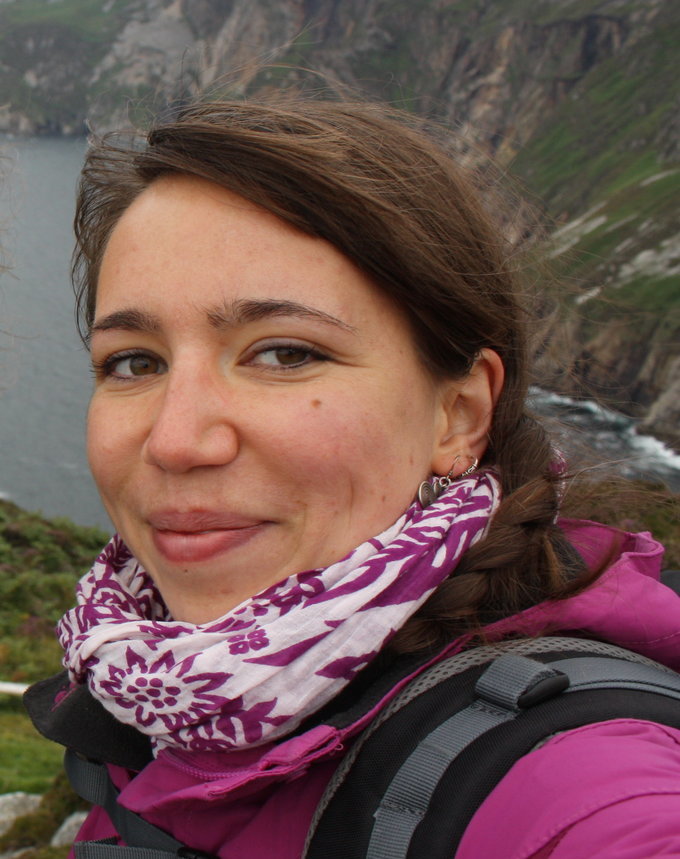Die Inhalte dieser Seite sind leider nicht auf Deutsch verfügbar.
Seitenpfad:
- INTERCOAST
- Latest News
- Archiv
- News 2016
- News from Lisa (formerly IC 11)
News from Lisa (formerly IC 11)
Ko te moana ko au, ko au ko te moana (I am the sea – the sea is me)
It was Aotearoa New Zealand’s diverse 20,000km of coastline - its long and sandy beaches, sheltered harbours and bays, dramatic cliffs, rocky headlands, stunning fiords and wild dunes - that I fell heads over heels in love with when I first came to Aotearoa New Zealand as an Intercoast PhD student in 2011. And it was this coast that drew me back a few years later to establish a permanent life here.
I’m not alone with my passion for the coast: 75% of New Zealander’s live within 5km of the coast and spend considerable amounts of their free time enjoying the beaches, fishing, boating or surfing. Marine habitats support a unique diversity of indigenous fauna and flora and many coastal sites are highly valued spiritual sites and an important source of kaimoana (seafood) for tangata whenua (people of the land / Māori). The coastal and marine environment also provides the basis for some of the country’s most important economic activities, including fishing, aquaculture, tourism, shipping, mining and oil and gas exploration.
The increasing number and intensity of these activities are causing conflicts around the use of coastal areas that are difficult to resolve. And the cumulative effects of these activities, combined with the impacts from climate change (including ocean acidification and warming, sea level rise), put the marine ecosystems under immense pressure. Part of the way communities are responding to these pressures is to explore more integrated and collaborative approaches to coastal management, such as marine spatial planning. The currently ongoing Sea Change – Tai Timu Tai Pari project in the Hauraki Gulf is a recent example.
The promotion of sustainable management of New Zealand’s marine ecosystems that supports marine life, society and the economy is also high on the Government’s agenda. Current trends and priorities in coastal management include
I’m not alone with my passion for the coast: 75% of New Zealander’s live within 5km of the coast and spend considerable amounts of their free time enjoying the beaches, fishing, boating or surfing. Marine habitats support a unique diversity of indigenous fauna and flora and many coastal sites are highly valued spiritual sites and an important source of kaimoana (seafood) for tangata whenua (people of the land / Māori). The coastal and marine environment also provides the basis for some of the country’s most important economic activities, including fishing, aquaculture, tourism, shipping, mining and oil and gas exploration.
The increasing number and intensity of these activities are causing conflicts around the use of coastal areas that are difficult to resolve. And the cumulative effects of these activities, combined with the impacts from climate change (including ocean acidification and warming, sea level rise), put the marine ecosystems under immense pressure. Part of the way communities are responding to these pressures is to explore more integrated and collaborative approaches to coastal management, such as marine spatial planning. The currently ongoing Sea Change – Tai Timu Tai Pari project in the Hauraki Gulf is a recent example.
The promotion of sustainable management of New Zealand’s marine ecosystems that supports marine life, society and the economy is also high on the Government’s agenda. Current trends and priorities in coastal management include
- Modernising the legislative framework for marine protection;
- Providing national direction for aquaculture;
- Increasing the information base about the ocean. The Marine Domain report (recently published by Statistics NZ and the Ministry for the Environment) highlights a significant lack of understanding about what’s going on in the marine sphere, and also reflected in the National Science Challenges focusing on Sustainable Seas, The Deep South and Resilience to Nature's Challenges.
I am immensely grateful to be able to continue working on coastal management issues in Aotearoa New Zealand. And living in Wellington – waking up to the sun rising over the harbour, strolling along the waterfront at lunchtime and exploring the rugged western coastlines on weekend runs – is turning my love for the coast and sea into a long-lasting relationship.

‘coffee break’ – A usual coffee break across the road in front of the NZ Parliament (i.e. ‘Beehive’)

Makara beach west of Wellington, with views across Cook Straight to the South Island

Wellington harbour’ – View over Wellington harbour from Mount Kaukau - Tarikaka



